Ischaemum muticum L.
| Etymology | Genus | Causing ischaemia; originally given to Digitaria sanguinalis for its styptic property |
|---|---|---|
| Species | Blunt; perhaps referring to the cordate base of the leaves | |
| Family | Poaceae | |
| Synonyms | Andropogon polymorphus Steud., Ischaemum repens Roxb., Tripsacum muticum (L.) Raspail | |
| Common Names | Seashore Centipede Grass, Drought Grass, Rumput Tembaga Jantan | |
| Status | Native: Least Concern | |
| Form | Herb | |
| Native Distribution | South and Southeast Asia, and the Pacific Islands | |
Diagnostics:
Ischaemum muticum is a common grass with prostrate habit found on lawns and sandy beaches. It can be easily spotted when it flowers (about 25 mm long). The inflorescence is short and stout, made conspicious because of the whitish anthers and stigmas. Vegetatively, the leaves are erect, with the tip pointed and the base cordate.
Interesting Facts:
The Seashore Centipede Grass is used as fodder and also as a good binder for preventing soil erosion (Ipor & Bakii, 1992).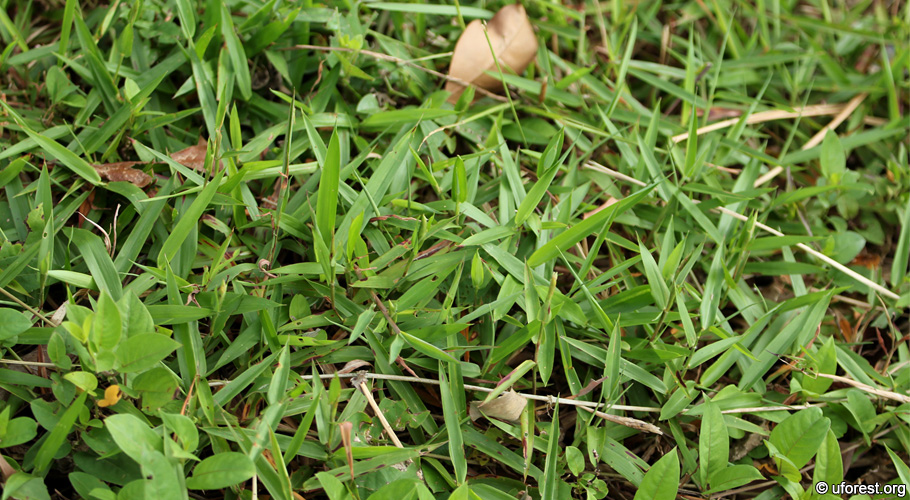
A lawn covered with the Seashore Centipede Grass. Note the pointy leaf habit.
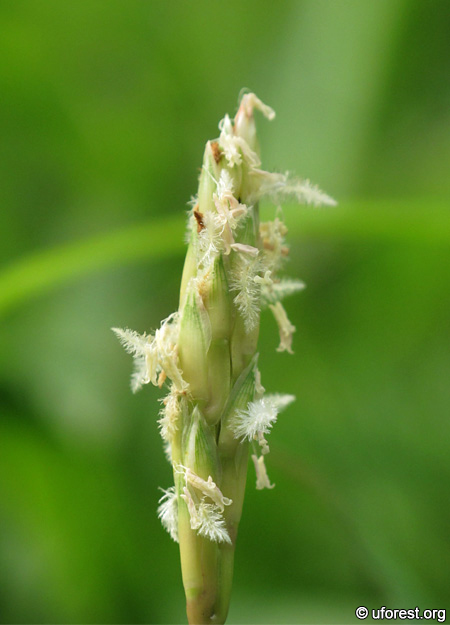
The inflorescence with its white bushy stigmas and anthers.
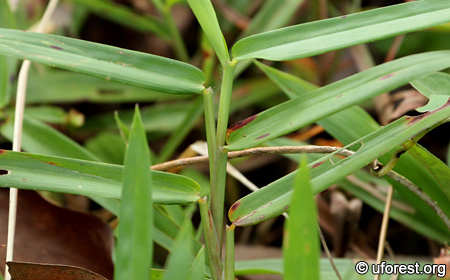
Dichotomous branching of leaves. Note the overlapping shealth.
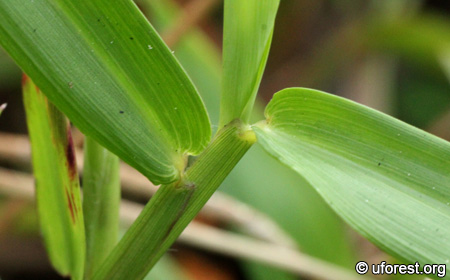
The leaf base is cordate.
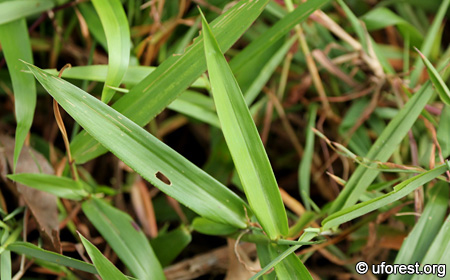
The leaves are erected and have a pointed tip.
References
Ipor IB & BB Baki. (1992) Ischaemum muticum L. In: Mannetje L't & RM Jones (Eds). Plant Resources of South-East Asia No. 4: Forages. Pudoc, Wageningen, The Netherlands. pp. 240.Author: Siyang
Posted: 2013-03-11 / Modified: 2017-12-25
Google Ads